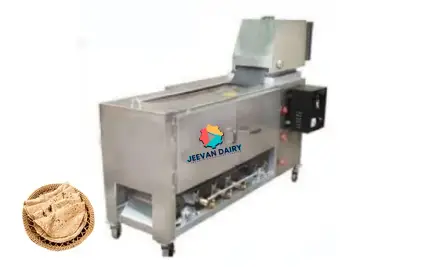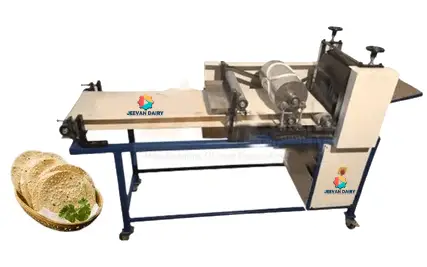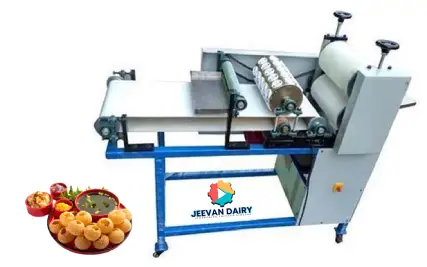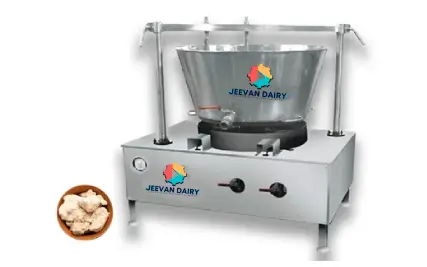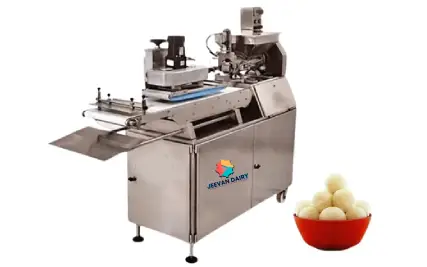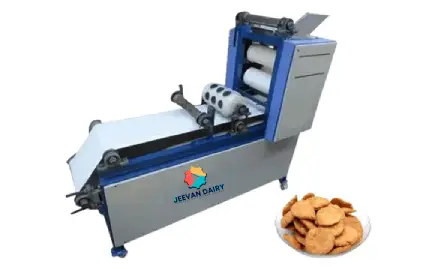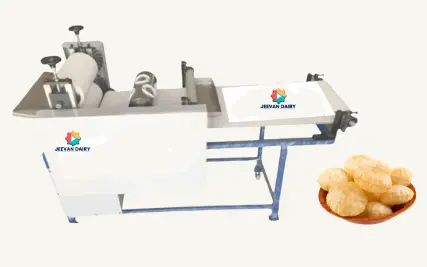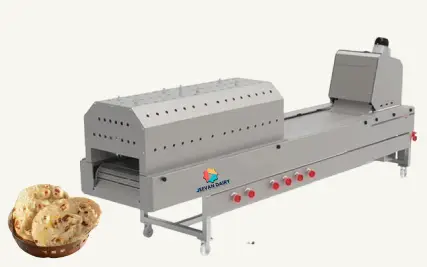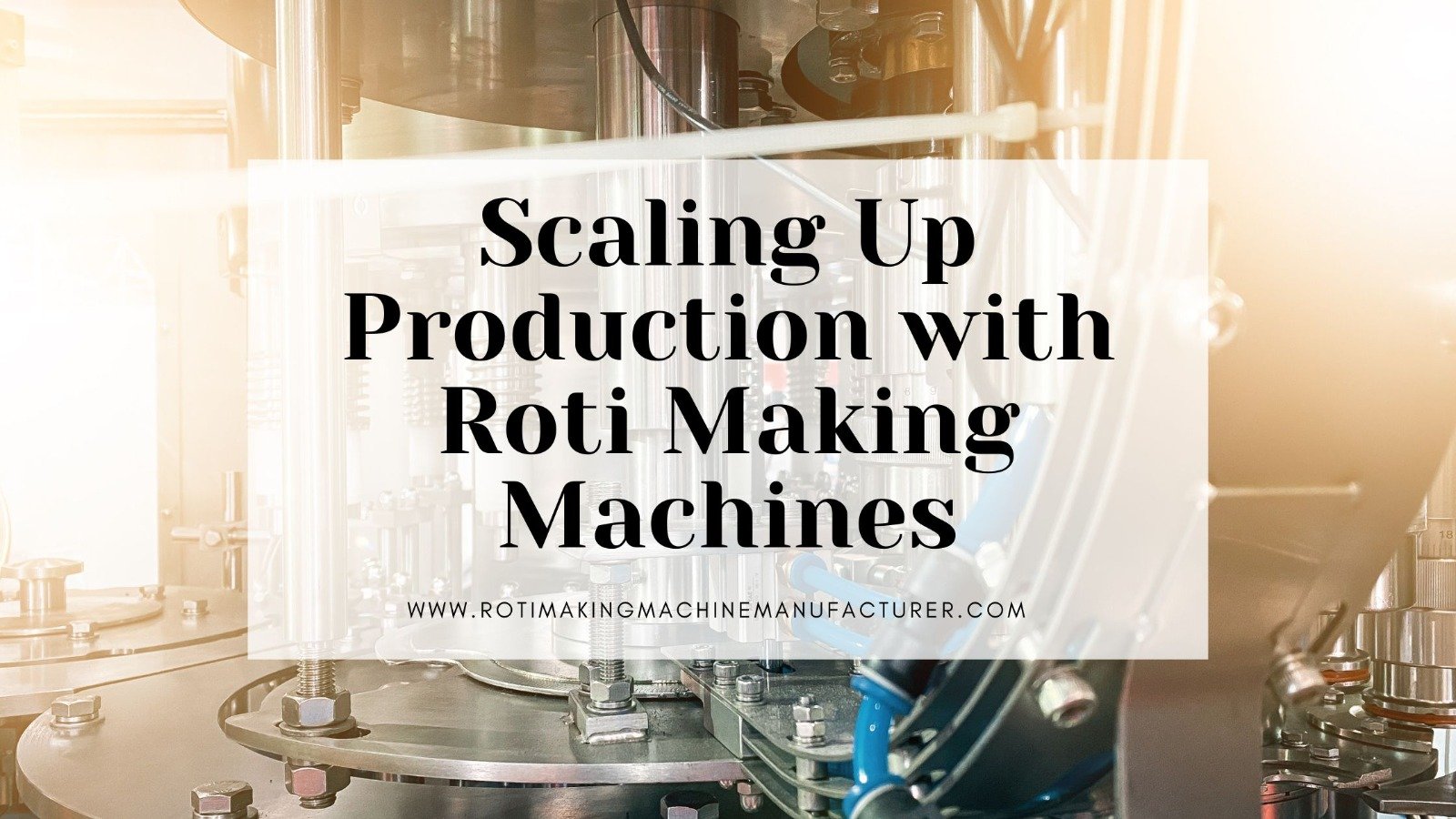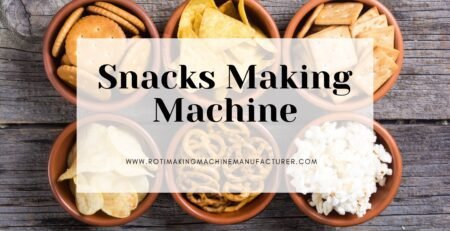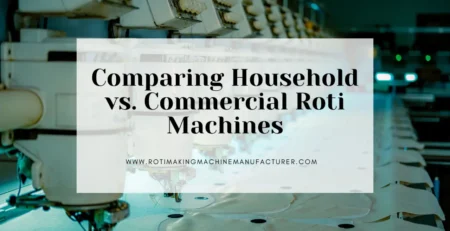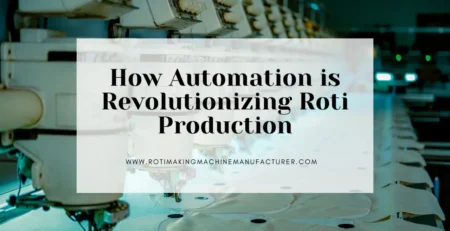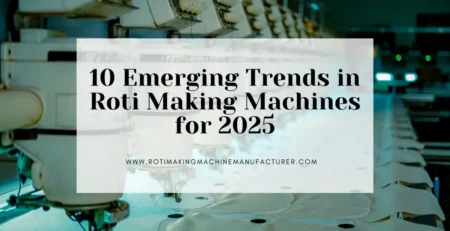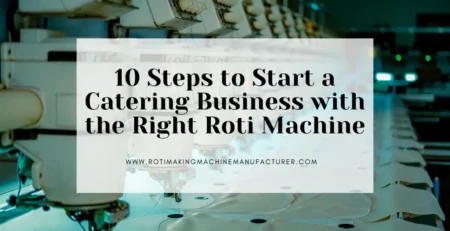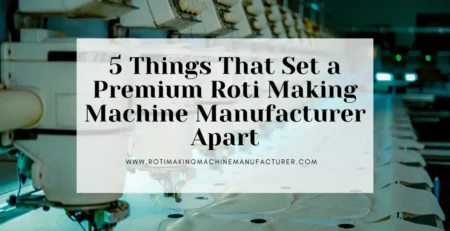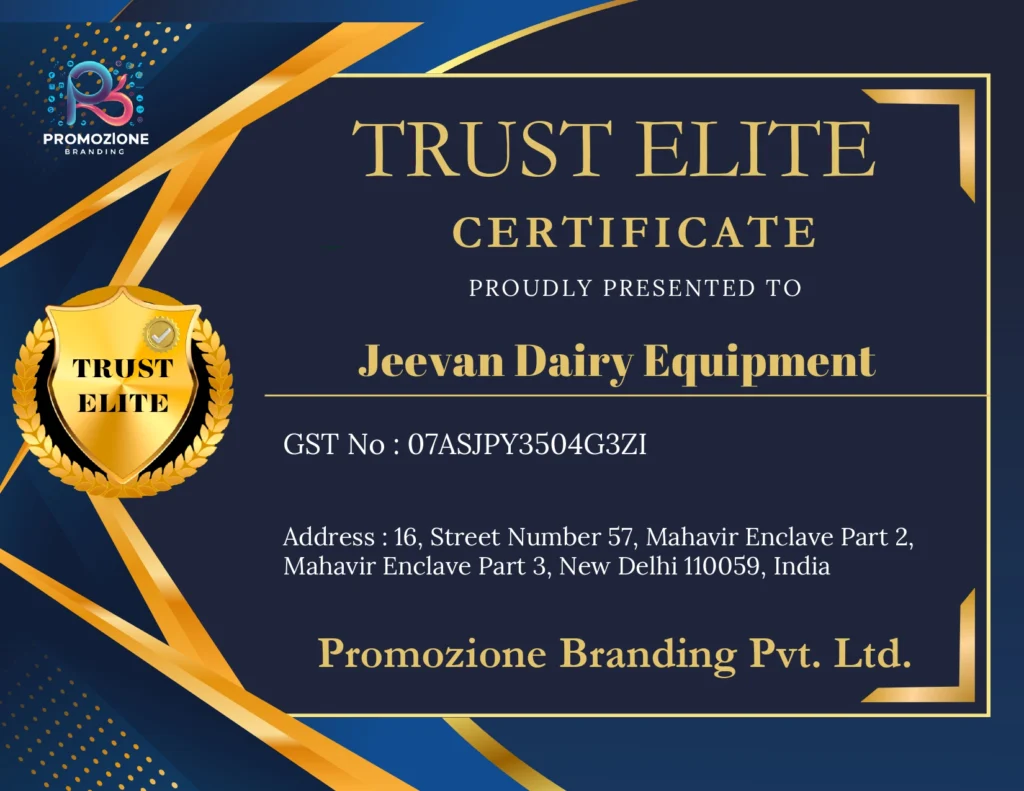Scaling Up Production with Roti Making Machines
Introduction
Many restaurants, commercial kitchens, and small businesses struggle with effectively scaling food production. Conventional roti-making techniques are time-consuming, labor-intensive, and frequently unreliable. Businesses require creative solutions to maintain quality while boosting output as demand rises.
This is the role of contemporary roti-making equipment. These devices enable food companies to increase production without sacrificing quality by combining automation, accuracy, and efficiency
Leading roti-making machine manufacturer Jeean Dairy Industry offers solutions for businesses of all sizes, from large industrial kitchens to small tiffin services. This article examines the technological benefits, operational effectiveness, and wider effects on sustainability and profitability of roti-making machines, as well as how they aid in business growth.
The Need for Scaling Production in the Food Industry
Efficient production scaling has become essential for both small and large businesses in the fast-paced food industry of today. Traditional manual methods frequently fail to meet the growing demand for fresh, hygienic, and high-quality food products in India. Here’s a thorough examination of the reasons why production scaling is essential:
1.1 Increasing Customer Demand
- Urbanization and Lifestyle Changes: As more people move into cities and lead hectic lives, there is a greater need for quick, prepared meals. As a mainstay of Indian cooking, rotis are highly sought-after in homes, cafeterias, restaurants, and cloud kitchens.
- Food Delivery Boom: Due to increased demand brought on by online food delivery services like Swiggy, Zomato, and Uber Eats, kitchens must efficiently produce large quantities.
- Customer Expectations: Customers anticipate timely delivery and consistent quality. Delays or inconsistent quality can harm a company’s reputation and ability to retain customers.
By scaling production, businesses can meet higher demand without sacrificing quality or service speed.
1.2 Limitations of Manual Roti Making
- Labor-intensive Process: In the traditional roti-making method, each piece must be rolled, flattened, and cooked separately. This is a slow, repetitive, and physically taxing process.
- Inconsistency in Quality: Rotis made by hand frequently have different thicknesses, sizes, and textures, which can impact flavor and patron satisfaction.
- High Labor Costs: Hiring more employees is necessary to scale production manually, which raises management complexity and operational costs.
- Errors and Fatigue: Constant manual preparation, especially in high-volume kitchens, can result in errors, fatigue, and decreased efficiency.
Manual methods struggle to keep up with growing orders, making automation essential for efficiency and consistency.
1.3 Automation as a Solution
- Consistent Output: Roti made by automated machines maintains its size, thickness, and cooking quality. This guarantees that each consumer will receive the same superior product.
- Labor Optimization: Businesses can reallocate labor to other tasks like packaging, serving, or expanding menu options because machines eliminate the need for additional staff.
- Time Efficiency: By drastically cutting down on preparation time, automated equipment allows kitchens to process more orders during regular business hours.
- Scalability: Companies can expand operations without experiencing a corresponding rise in labor or operating expenses if they purchase the appropriate machine from a reputable roti-making machine manufacturer, such as Jeevan Dairy Industry.
By bridging the gap between production capacity and demand, automation enables companies to expand sustainably while upholding strict quality and hygienic standards.
1.4 Meeting Commercial and Regulatory Standards
- Food Safety Compliance: By minimizing direct contact between dough and cooked rotis, automated machines lower the risk of contamination and guarantee hygienic standards are followed.
- Effectiveness in Big Operations: Machines that maintain constant quality under high-volume conditions are essential for establishments like restaurants, hotels, and catering services that serve hundreds or thousands of patrons.
- Operational Risk Reduction: Scalable automation lessens reliance on human operators, reducing the possibility of mistakes and guaranteeing prompt delivery of new goods.
By adopting roti-making machines, businesses not only scale efficiently but also comply with modern commercial and food safety standards.
1.5 Supporting Business Growth
- Increasing Production Capacity: Companies can boost output without having to raise labor or expenses in line.
- Increasing Profitability: Higher production efficiency, lower labor costs, and less waste all help to increase profit margins.
- Flexibility for Diversification: Businesses can add new menu items, cater to larger events, and diversify their offerings when machines handle core production.
Using roti-making machines to scale production gives companies the means to expand effectively, stay consistent, and compete in a market that is changing quickly.
How Roti Making Machines Boost Production Efficiency
2.1 Fully Automatic Machines
- Manage the kneading, pressing, and baking of dough in a single, smooth operation.
- Make hundreds of uniformly sized, thick, and soft rotis every hour.
- Cut back on the amount of labor needed.
2.2 Semi-Automatic Machines
- Allow for manual dough feeding while automating the pressing and cooking processes.
- Perfect for kitchens with modest production needs or small businesses.
- Provide flexibility while retaining some conventional process control.
2.3 Consistency and Quality Control
- By ensuring consistent rotis, machines cut down on waste and raise customer satisfaction.
- Rotis are never overcooked or undercooked thanks to automated cooking times.
2.4 Time Savings
- Faster production allows staff to focus on other critical tasks like meal preparation, plating, or customer service.
Key Features That Support Scaling
3.1 High Production Capacity
- Depending on the model, fully automated machines can make 500–1,000 rotis per hour.
- Smaller kitchens can benefit greatly from semi-automatic machines that can produce 50–200 rotis per hour.
3.2 Customization Options
- Adaptable browning, softness, and thickness to suit individual tastes.
- Large batches can be handled by machines that are programmed to operate without operator supervision.
3.3 Energy Efficiency
- To save electricity, sensors optimize heating cycles.
- Even at high output, lower operating costs are maintained by reduced energy consumption.
3.4 Durability and Robust Build
- Strong parts guarantee that machines can endure constant use.
- Longevity is increased by premium motors, stainless steel construction, and non-stick surfaces.
3.5 Ease of Maintenance
- Downtime is decreased by easily cleaned surfaces and detachable plates.
- During times of high demand, machines stay operational thanks to dependable after-sales service.
Economic Benefits of Scaling with Machines
4.1 Lower Labor Costs
- To make the same number of rotis, fewer employees are required.
- Companies can increase efficiency by reallocating employees to other functional areas.
4.2 Reduced Wastage
- Minimal dough or food waste is ensured by consistent portioning.
- Profitability rises when waste is reduced.
4.3 Increased Revenue Potential
- Companies can take on bigger orders or branch out into corporate contracts, delivery services, or catering.
- Increased production capacity enables growth without corresponding rises in labor or energy expenses.
4.4 ROI and Long-Term Savings
- Increased output, lower labor costs, and energy savings offset the initial investment in machines.
- Reliability and long-term return on investment are guaranteed by machines from a reputable roti-making machine manufacturer like Jeevan Dairy Industry.
Environmental and Social Benefits
5.1 Energy and Resource Efficiency
- When compared to manual cooking setups, machines use less power.
- Accurate portion control reduces flour waste.
5.2 Hygiene and Safety
- Hygiene is improved by little human contact.
- Workers are protected by safety features like automatic shut-off and heat-resistant handles.
5.3 Employee Welfare
- lessens the physical strain that repetitive rolling and kneading of dough causes on employees.
- increases job satisfaction and retention by freeing up workers for more complex tasks.
5.4 Support for Small Businesses
- Startups can scale without incurring significant labor costs thanks to machines.
- Entrepreneurs can sustainably expand their businesses while upholding safety and quality standards.
Jeevan Dairy Industry: Partner for Scaling Your Roti Production
6.1 Trusted Manufacturer
One of India’s top producers of roti-making equipment, Jeevan Dairy Industry offers dependable, long-lasting, and high-quality equipment.6.2 Innovation and Technology
- provides sophisticated, fully and semi-automated machines.
- includes energy-efficient designs, safety features, and intelligent controls.
6.3 Wide Product Range
- appliances for large commercial kitchens, small businesses, and homes.
- Options can be altered to fit budget, kitchen size, and production volume.
6.4 After-Sales Support
- Continuous operation is ensured by installation, maintenance, and support for spare parts.
- Technical advice enables companies to efficiently scale production and maximize machine utilization.
6.5 Proven Track Record
- Hundreds of restaurants, tiffin services, and commercial kitchens throughout India have faith in us.
- The consistent production of uniform, high-quality rotis by machines boosts productivity and profitability.
Real-World Examples of Scaling with Roti Making Machines
The ability of contemporary roti-making equipment to scale production effectively, preserve quality, and increase profitability is demonstrated with the aid of real-world examples. Here is a thorough examination of practical uses in various business domains:
7.1 Cloud Kitchens
Cloud kitchens have become increasingly popular in India due to the rise of food delivery platforms like Swiggy and Zomato.
- High-Volume Production: Cloud kitchens can effectively meet the increasing online demand by producing hundreds of rotis per hour thanks to fully automatic roti makers.
- Consistency: All rotis are the same size, thickness, and softness, guaranteeing that patrons always get meals of the highest caliber.
- Operational Efficiency: By eliminating manual labor, cloud kitchens free up employees to work on other projects like order management, packaging, and delivery preparation.
- An example of a scenario: Two fully automated machines from Jeevan Dairy Industry can be used by a cloud kitchen that serves 500–700 orders a day to scale operations without hiring more kitchen staff, preserving quality, and cutting expenses.
7.2 Restaurants and Cafeterias
Restaurants, hotels, and large cafeterias often require high-volume roti production to serve hundreds of customers daily.
- Semi-Automatic Machines: To maintain manual control over dough quality while balancing cost and efficiency, mid-sized restaurants and smaller kitchens use semi-automatic machines.
- Speed and Consistency: During busy times, employees can make rotis more quickly without sacrificing quality thanks to machines.
- Employee Welfare: Employees are less tired and happier at work since they aren’t spending hours rolling and kneading dough.
- Example Scenario: Two semi-automatic machines can help a 150-seat restaurant that serves traditional Indian food for lunch and dinner maintain consistent quality while allowing the kitchen to effectively handle demand during peak hours.
7.3 Tiffin Services and Small Food Businesses
Home-based or small-scale food businesses often struggle to meet growing customer demand while keeping costs low.
- Scaling Without More Work: Small business owners can boost production from 50 meals per day to 200–300 meals per day without hiring more workers thanks to semi-automatic machines.
- Consistency and Hygiene: Customers’ trust is increased when machines guarantee that every roti satisfies quality standards.
- Revenue Growth: Businesses can take on bigger orders or extend their delivery areas when they have more production capacity.
- Example Scenario: By employing a semi-automatic roti maker from Jeevan Dairy Industry, a neighborhood tiffin service can process twice as many orders daily while upholding hygienic standards, allowing the owner to expand the company sustainably.
7.4 Hotels and Catering Services
Hotels and catering services often require large-scale roti production for weddings, corporate events, and banquets.
- Fully Automatic Machines: These devices quickly make rotis without sacrificing consistency or flavor, which is crucial for upholding a company’s reputation at big gatherings.
- Operational Efficiency: Rather than performing tedious manual roti-making duties, staff can concentrate on meal presentation and coordination.
- Cost savings: Increases output while lowering the need for extra labor, boosting profitability.
- For instance, a catering company overseeing a gathering of 500 guests can depend on two large roti-making machines to efficiently make over 1,000 rotis, guaranteeing prompt service and constant quality.
7.5 Educational Institutions and Corporate Cafeterias
Schools, colleges, and corporate cafeterias serve hundreds of meals daily, requiring efficiency and hygiene.
- Semi-Automatic or Fully Automatic Machines: Institutions can choose machines that meet their production needs based on volume.
- Time management: Meals can be served on time because machines expedite production.
- Hygiene Compliance: Meals that have less human contact adhere to stringent safety and hygienic regulations.
- Example Scenario: To ensure timely meal delivery, maintain uniformity, and cut down on labor hours, a college cafeteria serving 1,000 students can employ a combination of semi-automatic and fully automatic roti makers.
7.6 Lessons from Real-World Use
Across these examples, several key takeaways emerge:
- Scalability: Companies of all sizes can boost output with roti-making machines without having to raise labor or expenses proportionately.
- Consistency: The reputation of a brand depends on the rotis’ consistent size, thickness, and texture, which is guaranteed by automated procedures.
- Safety and Hygiene: By minimizing direct contact with food, machines create safer and cleaner preparation areas.
- Profitability: Higher revenue and long-term company growth are the results of increased production capacity, decreased labor, and minimal waste.
Businesses can attain operational excellence, scale effectively, and maintain high quality by incorporating roti-making equipment from reliable manufacturers like Jeevan Dairy Industry.
Tips for Scaling Effectively
- Select the Correct Machine: Align production capacity with your anticipated and present demand.
- Provide staff training to ensure correct handling, upkeep, and troubleshooting.
- Frequent Maintenance: To avoid downtime, clean and service machines on a regular basis.
- Optimize Kitchen Layout: Set up equipment to maximize productivity.
- Track Energy Use: To reduce operating expenses, use energy-efficient settings.
Market Trends and Future Outlook
India’s roti-making machine market is expanding quickly. Automation, cleanliness, and efficiency in kitchen operations are being adopted by both homes and businesses. A number of significant trends are influencing the market for 2025 and beyond, offering chances for expansion, creativity, and environmentally friendly operations.
9.1 Automation Will Dominate Commercial Kitchens
Automation is no longer just a convenience—it has become a necessity for scaling production efficiently:
- High-Demand Operations: Because fully automatic roti makers can make hundreds of rotis in an hour, they are becoming more and more popular among cloud kitchens, restaurants, and catering services.
- Labor Optimization: By eliminating the need for skilled labor for monotonous jobs like cooking and rolling, automation frees up employees to concentrate on other high-value tasks.
- Consistent Quality: Automated devices guarantee consistently high-quality rotis, which is critical for both brand reputation and customer satisfaction.
Roti Making Machine Manufacturers like Jeevan Dairy Industry are leading the market by providing fully automated solutions that combine precision, durability, and high output capacity.
9.2 Smart Kitchens and IoT Integration
The future of roti makers is being shaped by smart kitchen technology:
- Digital Controls and Monitoring: Touchscreen, programmable, and alert-equipped machines are more accurate and user-friendly.
- IoT connectivity: Some more sophisticated models now enable remote control and monitoring through smartphone apps, allowing operators to monitor production or change settings even when they are not in the kitchen.
- Data Analytics: Integration with smart systems helps track production efficiency, energy consumption, and maintenance schedules, ensuring optimal performance.
Smart kitchens are becoming increasingly popular among large commercial operations, positioning smart roti makers as a key growth segment.
9.3 Sustainability and Energy Efficiency
Environmental awareness is influencing kitchen appliance design:
- Energy-Efficient Equipment: Modern roti makers are made to produce a lot of food with the least amount of electricity.
- Reduced Food Waste: Careful portioning and gradual cooking reduce the amount of overcooked rotis and dough waste.
- Eco-Friendly Materials: Manufacturers are increasingly utilizing durable, recyclable, and food-safe materials when constructing machines.
Sustainable practices not only reduce operational costs but also appeal to environmentally conscious consumers and businesses.
9.4 Rising Adoption by Small Businesses and Startups
The demand for semi-automatic and fully automatic machines is growing among small food businesses:
- Startups and Home-Based Kitchens: New business owners can expand production without employing sizable workforces thanks to semi-automatic machinery.
- Fully automated equipment helps meet high volume demands while upholding standards of hygienic practices and quality in cloud kitchens and tiffin services.
- Competitive Advantage: By effectively producing fresh, consistent rotis, businesses that use modern machinery gain a competitive edge.
Manufacturers like Jeevan Dairy Industry offer scalable solutions tailored to the unique needs of small and medium-sized enterprises.
9.5 Integration with Delivery and Online Services
The rise of food delivery platforms is driving the need for faster production:
- High-Volume Output: Kitchens can handle several online orders at once thanks to automated roti makers.
- Consistent Quality: Standardized rotis guarantee client satisfaction and cut down on grievances.
- Operational Flexibility: By handling surges during peak hours without the need for extra labor, machines can alleviate operational bottlenecks.
By aligning machine capabilities with delivery demands, businesses can expand their market reach and maximize revenue.
9.6 Future Innovations and Emerging Technologies
The industry is poised for continued innovation in the coming years:
- AI-Powered Machines: AI algorithms that modify cooking parameters according to batch size, humidity, and flour type may be incorporated into future models.
- Voice-Controlled Operations: Hands-free operation of smart kitchen appliances may enable quicker, safer production.
- Hybrid machines will accommodate a range of culinary tastes by combining fully automated operation with adjustable manual options.
As a top producer of roti-making equipment, Jeevan Dairy Industry is constantly spending money on R&D to incorporate these advancements and guarantee that companies have access to state-of-the-art, future-ready solutions.
9.7 Market Outlook
- Growth Rate: As India’s population becomes more urbanized, people lead busier lives, and the food service industry grows, there will likely be a significant increase in demand for roti-making machines.
- Competitive Advantage: Those who implement automation and smart kitchen solutions early on will benefit from an operational advantage in terms of cost control, speed, and efficiency.
- Long-Term Viability: Businesses aiming to grow sustainably should invest in machines that combine advanced features, energy efficiency, and durability, as these will dominate the market.
In conclusion, automation, smart technology, and sustainability are the direction that India’s roti production is taking. Companies will be well-positioned to scale operations effectively, maintain high quality, and satisfy the changing demands of 2025 and beyond if they invest in high-quality machinery from reliable manufacturers like Jeevan Dairy Industry.
Conclusion
With today’s roti-making machines, scaling up roti production is no longer an issue. While semi-automatic machines provide flexibility, affordability, and conventional control, fully automatic machines offer speed, consistency, and high output.
Businesses can obtain long-lasting, superior, and effective machines that promote sustainable growth by selecting a reputable roti-making machine manufacturer like Jeevan Dairy Industry. These devices enhance environmental efficiency, worker welfare, and hygiene in addition to raising productivity and lowering labor costs.
The secret to success in the cutthroat food industry of today is effective scaling. Purchasing the appropriate roti-making equipment guarantees constant quality, client happiness, and profitability, setting up companies to expand sustainably and satisfy demands in 2025 and beyond.

